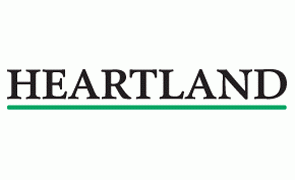
Standard & Poor's (S&P) has affirmed Heartland New Zealand's BBB- credit rating and improved the outlook to "stable" from "negative" in a move that's crucial to the building society's ambition of obtaining bank registration from the Reserve Bank.
Formed in January through the merger of Marac Finance, CBS Canterbury and Southern Cross Building Society, Heartland wants to become a bank and an investment grade credit rating, of which BBB- is S&P's lowest, is a key starting point.
Meanwhile, S&P also released its updated ratings - under its new criteria - on Kiwibank, The Co-Operative Bank and TSB Bank. The Co-Operative Bank, formerly PSIS, had its rating unchanged at BBB- but the outlook was improved to "positive" from "stable", Kiwibank's rating was unchanged at AA- with a "stable" outlook, and TSB was also unchanged at BBB+ with a "stable" outlook.
Kiwibank said, however, that the rating on its NZ$150 million worth of perpetual callable non-cumulative preference shares issued by Kiwi Capital Securities Limited was cut to BB+ from BBB.
Heartland, which has deposits covered by the extended Crown retail deposit guarantee scheme until December 31 and is currently a building society, was keen to talk up its affirmed BBB- rating with the outlook improved to "stable" from "negative."
“Having the rating not only affirmed, but the outlook improved to ‘stable’ is particularly pleasing given many banks around the world are being downgraded," Heartland CEO Jeff Greenslade said.
"In that context it is essentially a relative upgrade. The investment grade rating underpins the strength and strategy of Heartland.”
In August Greenslade said dialogue was underway with the Reserve Bank on Heartland's ambition of becoming a bank. Today's S&P announcement on Heartland comes after it affirmed Heartland's BBB- credit rating in August but lowered the outlook to "negative" from "stable" saying its asset quality and earnings profile weren't consistent with the current rating and were weaker compared with other similarly rated peers.
Heartland's eyes on rural sector after PGG Wrightson Finance acquisition
Heartland was formed with the aim of becoming a sharemarket listed, New Zealand controlled bank that doubles its NZ$2.2 billion asset base within five years by growing lending to families, small and medium sized businesses and farmers. The building society completed the acquisition of about NZ$465 million worth of PGG Wrightson Finance assets and NZ$455 million worth of liabilities on August 31 meaning about 23% of Heartland's loan book involves money lent to the rural sector.
Greenslade says Heartland wants to focus its rural sector lending on working and seasonal capital and argues there is the need for a locally controlled specialist as the rural sector is "too important" to leave to the hands of overseas domiciled financial institutions.
Last week S&P, which has changed the way it rates banks, downgraded New Zealand's big four banks - ANZ, ASB, BNZ and Westpac - to AA- from AA. It also downgraded Rabobank New Zealand to AA from AAA. The Hong Kong based parent of New Zealand's HSBC - the Hongkong and Shanghai Banking Corporation Ltd - was cut to AA- from AA.
S&P's new ratings criteria takes greater account of the entity's local operating environment. Peter Sikora, S&P's analytical manager for financial institutions in the Pacific, told interest.co.nz in February the methodology revamp was both a continuing evolution of S&P's analysis and the incorporation of lessons learnt from the Global Financial Crisis.
"The biggest thing we learnt from the Global Financial Crisis is that the operating environment plays a more significant part of an individual entity’s credit profile," said Sikora.
"While we always believed that, that gets a far more significant weighting in the new criteria. It’s akin to the example of having the best house in the street, but at the end of the day the quality of your house is also a function of the neighbourhood it’s in."
As part of the review S&P last month downgraded its Banking Industry Country Risk Assessment (BICRA) on New Zealand to group 3 from group 2, placing major local banks in the same group as banks from Italy, the United States, Britain and South Korea. S&P says the BICRA methodology evaluates and compares global banking systems using economic risk and industry risk factors.
A BICRA is scored on a scale from 1 to 10, ranging from the lowest-risk banking systems (group 1) to the highest-risk (group 10).
(Updates add detail on Co-Operative Bank, Kiwibank & TSB ratings, background on Heartland).

We welcome your comments below. If you are not already registered, please register to comment.
Remember we welcome robust, respectful and insightful debate. We don't welcome abusive or defamatory comments and will de-register those repeatedly making such comments. Our current comment policy is here.